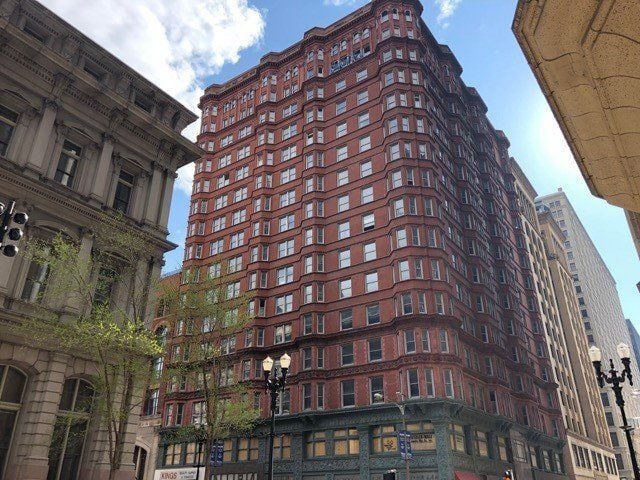ST. LOUIS — A $53 million rehab of the Chemical Building, the century-old, 17-story red brick and terra cotta architectural gem that has sat vacant in the heart of downtown for over a decade, has won final signoff from the city.
The St. Louis Land Clearance for Redevelopment Authority gave the green light this week to local development incentives for the project, including 17 years of full property tax abatement, a decade of personal property tax abatement and a sales tax exemption on construction materials. Financing is expected to close at the beginning of the year and construction to begin soon thereafter, with completion scheduled for mid-2021.
Restoration St. Louis, led by Amy and Amrit Gill, announced in April that it intended to buy the building at 721 Olive Street from a New York firm whose plans for “micro-apartments” had stalled. The Gills plan to add a mix of 84 hotel rooms and 72 apartments to the historic structure designed by Henry Ives Cobb and connect it to their recently completed Hotel St. Louis next door.
People are also reading…
While the St. Louis Board of Aldermen approved the incentive package in July, conflicting personalities and the large size of the incentive package led behind-the-scenes negotiations to boil into view over the summer.
The Gills’ plan called for extending the 20-year tax abatement district that had been approved for use on Hotel St. Louis to also cover the Chemical Building, providing the last 17 years of tax abatement for the new rehab project. That’s despite a move by the city in recent years to no longer abate 100% of new property taxes except in the weakest neighborhoods.
City officials also gave the Hotel St. Louis project a break on half of the city sales tax on hotel rooms, up to $2.3 million. That was not included in the Chemical Building incentive package, but a personal property tax exemption was added to abate furniture and other fixtures for a decade.
The developers pointed out that several past efforts to bring the Chemical Building back to life had failed. It was foreclosed on twice as plans for apartments and other conversions stalled.
”I really believe this is a good use of the city’s money, and necessary to restore this building,” Restoration St. Louis vice president of development Laura Rebbe told a St. Louis aldermanic committee in July.
Some aldermen questioned the amount of the incentive, given the city’s new guidelines, noting the developers also planned to use state and federal historic tax credits as part of the financing package.
The committee chair, Joe Roddy, has butted heads with the Gills on other projects over the years and was upset that the initial proposal included 17 years of personal property tax abatement instead of only a decade, a concession he said he had tried to negotiate. City staff indicated that the difference amounted to only about $100,000 over the life of the incentive.
LCRA Director Otis Williams made a personal plea in July to aldermen to endorse the incentives and get the building redeveloped, reactivating the block and generating new tax revenue.
“I understand that many of you have concerns or have issues either with the project tax abatement or with the developer, but if we could for the sake of getting this project done, if we could have support for it, I would certainly appreciate it,” Williams said at the July hearing.
With a commitment to reduce the personal property tax abatement to only 10 years, aldermen ultimately endorsed the incentive package.















